Does It Really Cost More to Eat Real Food? (Part 1)
Debunking the myths that keep poor people stuck
“People living in poverty can’t afford to buy real, fresh food.”
“Ultra-processed foods are the only option for marginalized populations who live in food deserts.”
“Ultra-processed foods are cheaper and faster—two things people with lower-incomes need access to because they don’t have time to cook food from scratch.”
How many times have we heard these narratives from talking heads on news programs, posted on X by “activists,” or written about in a book by an author who leans more liberal and progressive?
Too many to count.
I really want to believe these things are true. I want to believe that people struggling financially have no choice but to eat McDonalds and buy Stoeffers TV dinners for their families because fresh, home cooked meals are for “privileged” people. But every time I feel myself leaning into this narrative and beginning to agree that maybe the “system” is setup against them, I stop myself . . . not because I’m not empathetic or because I have “white privilege” (I’m Hispanic, by the way).
No, not because of that. I stop myself because my own personal experience—and that of the immigrant community I grew up in—would starkly disagree.
I don’t agree that people living in poverty can’t afford fresh food because my very poor parents never bought anything but fresh food (without the help of food stamps or welfare programs).
I don’t agree that ultra-processed foods are the only option for marginalized populations who live in food deserts because my parents found a way to access fresh food as poor, non-English speaking immigrants in NYC.
I don’t agree that ultra-processed foods are cheaper and faster—“two things people with lower-incomes need access to because they don’t have time to cook food from scratch”—because my mother (and sometimes even my dad) cooked our meals from scratch everyday, despite both my parents working multiple jobs for minimal pay.
You might be tempted to fire back: “But food is more expensive today than it was when you were growing up in NYC!”
Sure, you’re absolutely right. Groceries are astronomically higher today than they used to be, but that doesn’t mean they’re more expensive than highly processed, ready-to-eat food that destroys your health, stunts growth in children, creates chronic conditions and diseases, and a whole host of other issues that nobody can afford to manage.
The bottom line is this: Real food is often more affordable than processed foods (ESPECIALLY in the long run when you think about the consequences to your health), doesn’t have to take hours to prepare, and IS accessible to the majority of people in the U.S.
Ultra-processed Foods Vs. Real Foods
Side note before we begin: I know that the average family cannot afford to buy 100% organic, grass-fed, pasture-raised, perfect everything. In fact, not even my own family can afford to buy everything from our local farmers. That’s why, in the below examples, I’m using 100% conventional options to reflect what the average person would buy, not their uber crunchy, more wealthy counterpart. At the same time, I’m only using examples of unprocessed or minimally processed foods that don’t contain added sugar, preservatives, dyes, or other mystery ingredients that would make it qualify as an ultra-processed food. Do not be mistaken, even if the chicken you buy was raised in horrible conditions, it will do your body more good than the frozen dinner with 45 ingredients your body cannot recognize.
I recently asked my mom why she never bought packaged foods for the family growing up. For context, both of my parents emigrated to the U.S. when they were in their 20s with absolutely nothing to their name—they couldn’t even speak English at the time. They didn’t have degrees, money in their pockets, or a large community of friends and family waiting for them in New York City. In fact, for the first few years, they were undocumented, so jobs were hard to come by, too.
They met pretty soon after arriving to the U.S. and married within a year of meeting each other. Three children quickly followed as they set up their life as best they could in Queens, NY.
When I say they had it rough, I really mean it. As a young mom, my mother got up at 3 AM many days during the week to deliver newspapers in Manhattan. She’d rush home at the end of her shift so she could care for us when it was time for my dad to leave for his job. They both worked at least 2 jobs at a time; my dad often juggled 3. One of their jobs included cleaning banks after hours, so my family would eat dinner at home and then head for the train. We’d clean as a family, and I remember it fondly.
I give you this context because I want to assure you that I’m writing this article from personal experience, not from a judgemental spirit.
I know what it’s like to be poor, because I’ve been there. Because my parents remind me of it daily. Because even as a college student in a big university (that was paid for 100% with student loans), I was cooking for myself in my apartment while the rest of my friends ate fast food for every meal or ate in the university cafeteria because they had meal cards their more wealthy parents could load up every month. And even back then, as an 18 year old, I knew from my mother’s example that my cheapest (and most healthy) options were the raw chicken, the bag of rice, and the head of broccoli that could feed me for a few days. I could stretch my very part-time income more doing that over what my roommates were doing.
So back to the question I asked my mom: “How come you never bought packaged foods?” I knew the answer, but I wanted to hear it from her mouth to confirm I had it right. She gave me two reasons:
“Packaged food was too expensive! You get a lot more bang for your buck by buying meat and rice instead.”
“We didn’t have packaged food in my country (Colombia) when I was growing up. I found that food gross (the packaged stuff in the U.S.). Back in Colombia, my mother cooked three meals a day for us. She went to the market every single day to buy the meat fresh from the butcher. I wanted foods that reminded me of her and of my home, so that’s what I cooked for you.”
Yup, that’s what I thought! From a poor family in Colombia to a poor family in Queens, NY, my mother is proof that real food does not cost more.
But in case you’re not yet convinced, I put together a few price comparisons.
You’re sure to find a big bag of chips in most homes across the U.S. Yes, even the homes in the low-income neighborhoods—I know this because I’ve seen it. And yet, chips are EXPENSIVE, especially when you consider that they provide absolutely zero nutritional value. In fact, they set you and your children back. Take these Doritos, for example. They contain FIVE different kinds of artificial food dyes. Food dyes are known to cause symptoms of ADHD in children. Is it any wonder diagnoses of ADHD in children are on the rise?
A family could spend $6 on this bag that would be eaten in one day without making a single belly feel full (because ultra-processed foods are designed to leave you hungry for more) OR they could take those $6 and buy nearly 2 pounds of breakfast sausage, 2 dozen eggs, a pound of ground beef, or a 5 lb whole chicken. Any of these options would feed a family for more than one meal AND leave bellies full of important macro and micro nutrients.
How many children walk into school each day with a baggie of goldfish crackers in their lunchbox? At $8 a box, this “snack” is a big waste of money. Save a dollar, and you could have bought a 32oz tub of greek yogurt that will give you and your child tons of protein to keep you full and focused, on top of calcium, vitamin D, and so much more.
My mom made sure to remind me that we also never ate out (until we were much older and my parents were doing slightly better financially), and with this price comparison, you can easily see why. Feed your family of 4 at Chick-Fil-A for $30 or spend about $20 on a whole chicken, a big bag of potatoes, a big bag of carrots, and I even threw in a bag of grapes for dessert.
Instant oatmeal might be fast, but it’s full of sugar and other weird ingredients that sound like they could be found at Home Depot. Spend 3 more cents an ounce for a big tub of oats you can throw in the crockpot overnight for “instant” breakfast the next day.
Feed your family once with a frozen lasagna that contains preservatives or you can feed your family twice or more for ~$25. Yes, this option may cost more, but take into account that it will feed your family more than once (unlike the frozen version) and you’ll have leftover ingredients (like the eggs and cottage cheese) that you can use in other meals, or you may even already have them on hand.
An Important Caveat
Here’s one thing I haven’t touched on yet that I’m aware of: I cooked at home as a college student because I watched my parents do it my whole life. I completely understand that many people didn’t have that example. They may feel completely intimated by the kitchen because no one ever taught them how to fry an egg. I get how that would present a significant challenge for the next generation.
BUT if you’re one of the many Americans trying to save on food costs, learning simple cooking skills is a more worthwhile investment than most things I can think of. Your health depends on it. Your children’s health depends on it. Your future medical expenses depend on it.
So if you didn’t have a parent cooking at home growing up, or maybe you’re like me who had the example but never actually learned HOW to cook the foods (I never cooked in the kitchen with my mom growing up), get on Youtube and watch homemakers cook. Get on Discovery+ and watch chefs walk you through recipes. Grab cookbooks from the library or recipes on Pinterest and just start experimenting. Find a friend who loves to cook and ask them to teach you the basics. You will only learn through lots of practice, and you will pass on an extremely valuable skill to your children, so get in the kitchen and get going.
Allow me to share a few tips to get you started . . .
Ways to Make Cooking Real Food More Affordable
If you’re starting from nothing, let’s talk about some things you can do to get your kitchen setup and your budget balanced before you hit the road running.
Shop second hand or BuyNothing Facebook groups for cookware if you don’t have any. My mom always shopped secondhand, still does! This was also how I first transitioned to non toxic cookware. I received a large set of nonstick cookware at my wedding, but once I learned about the toxins they leak into our food, I got rid of them and started building a new, mismatched set of safe cookware to protect my family.
My first purchases were three Revere stainless steel pots and pans from Goodwill. I knew this was a good brand because my mother-in-law still uses the Revere cookware she got for her wedding almost 50 years ago. I paid $5 for each one and two years later, I still use all three almost everyday.
Scout these shops and Facebook Marketplace for other kitchen tools, too like slow cookers, pressure cookers, storage containers, etc.
Find the grocery stores in your area that will discount meat that needs to be frozen ASAP (the fancier stores don’t do this). For me, that’s Kroger and Walmart. I have found organic chicken, wild-caught salmon, and all kinds of beef on sale at both of these stores because they were close to their freeze-by date. Just use them that day or pop in your freezer for another day!
Prioritize high protein foods over fresh produce. You want to prioritize foods that are going to be filling and provide lots of macro and micro nutrients. Don’t buy 8 different vegetables every week just because you were taught that fruits and veggies are the most important foods to eat. Our bodies need protein (and all the micronutrients that come with animal protein) more than it needs low calorie plant foods that will leave us hungry.
I’m obviously not saying you shouldn’t eat fruits and veggies, just that if your budget is really tight, focus on animal proteins (dairy products, eggs, chicken, beef, turkey, canned fish, etc.) before you shop for produce. And don’t forget to buy bone-in meat so you can make broths with the leftover bones—this will be another pantry staple you suddenly don’t need to buy anymore.
If you have money leftover, choose low-cost produce like potatoes, carrots, bananas, and apples. And don’t forget about frozen veggies! Bags of frozen, organic broccoli costs about $1.50 at my local Aldi—that’s a great way to buy veggies at a low-cost and you don’t have to worry about using it by a certain date!
Buy the least processed versions of foods. For example, instead of canned beans, buy dry beans. They’re really easy to cook in a pressure cooker and you can make so much more for less money. I like to make a big batch of black and pinto beans every once in a while and freeze them in 15oz portions (the amount in a typical can) for recipes throughout the year.
Buy in bulk at stores like Costco. If you can’t afford a membership, ask around to see if a friend has one and tag along on their next shopping trip. These types of stores have some of the best deals on food. For example, organic and pasture raised eggs at Costco costs $8 for two dozen right now. Most stores have pasture raised eggs for $5 a dozen, so that’s a $2 savings by buying in bulk.
Eat your leftovers. American’s waste so. much. food. We can reduce our waste by prioritizing our leftovers. I know there are some people who hate eating leftovers, but if you’re on tight budget, you need to get over that—too harsh? 🤷🏽♀️ Honestly, even if you’re not on a tight budget, get over it. Leftovers are the easiest way in the world to eat at home more often and save money.
First, learn to appreciate the hard work you put into cooking and the hard-earned money you spent on groceries. This will help you to eat the leftovers with more joy. Second, if you really don’t want leftovers the next day, freeze them for another day when you’re busy and don’t have time to cook! Third, learn how to spice up leftovers to make them more appealing. Whether that’s turning them into something slightly fresh and new or adding a new sauce, you can transform food many different ways. Check out the book An Everlasting Meal and its accompanying cookbook for ideas how to turn your leftovers into beautiful, reimagined meals.
Stop buying expensive spice blends and dressings and learn how to make your own. I’ve been making my own taco seasoning for years. I make a big batch and keep it in a glass mason jar alongside my other spices.
Recently, I was looking for a curry powder and was shocked to see all the options cost about $7. I was trying out a new recipe and knew there was a chance I would only use this blend once. So, instead of buying it, I turned it around and looked at the ingredient list. Turns out, I already had the various spices it was made with at home (cumin, turmeric, paprika, cayenne, etc.). Needless to say, I saved $7 that day and threw together my own version.
Here’s a link to a Pinterest board I have just for spices and dressings. There, you will find two of my favorites: a great recipe for making homemade dressings 3 different ways (I love to use the Italian one as a chicken marinade, too) and my favorite taco seasoning recipe. Not only will you save money, but your homemade versions will be made with much safer ingredients.
Stop buying broths and stocks and make your own. If you take my advice and primarily buy bone-in meat (which is cheaper, by the way), you’ll have plenty of bones to make broths and stocks. These can easily cost $3-4 a carton or you can keep the bones and veggie scraps in your freezer until you have enough to make some broth. Find easy how-to videos on Youtube! I promise you, there could not be an easier food to make.
Use cash at the grocery store. I did this for the first time over the Summer after going over budget several months in a row. I wrote about my experience here. To summarize: cash works! I saved SO MUCH money that month because cash made me more conscious of what I was putting in my grocery cart. Dave Ramsey is right: Cash is king.
Finally, change your mindset. I’m going to share a part 2 post next week where I talk about the other argument people bring up when they talk about real food being a “privilege,” and that is “time wealth.” If you convince someone that real food is actually cheaper, they will respond, “well, you’re not taking into consideration the time wealth! Poor people don’t have time to cook!” Really? Go back to the top and read about my parents again . . .
I’ll address this further in my next post, but for now, I want to encourage you to focus on the benefits of eating and cooking real food more than you focus on how much more time it takes to make chili vs. pop some plastic container in your microwave. If you think you don’t have the time to cook, consider how much time chronic illness will steal from your life in the future. That’s not to scare you, it’s just the truth. A recent study funded by the World Cancer Research Fund, found that each 10 percent point increase in consumption of ultra-processed foods was linked with an increased incidence of overall cancer, especially breast and ovarian cancers.
This stuff matters, friends. You might find you have less time to watch T.V. at night or less time to scroll Instagram, but is that not a worthwhile trade? I would say it absolutely is.
I’d love to know more about your own experience. Have you found that eating real food is cheaper than eating out or buying packaged foods? Please let me know in the comments below! Be on the lookout for next week’s post where I’ll talk about “time wealth.” For now, I hope you have a wonderful week filled with good, home cooked food.





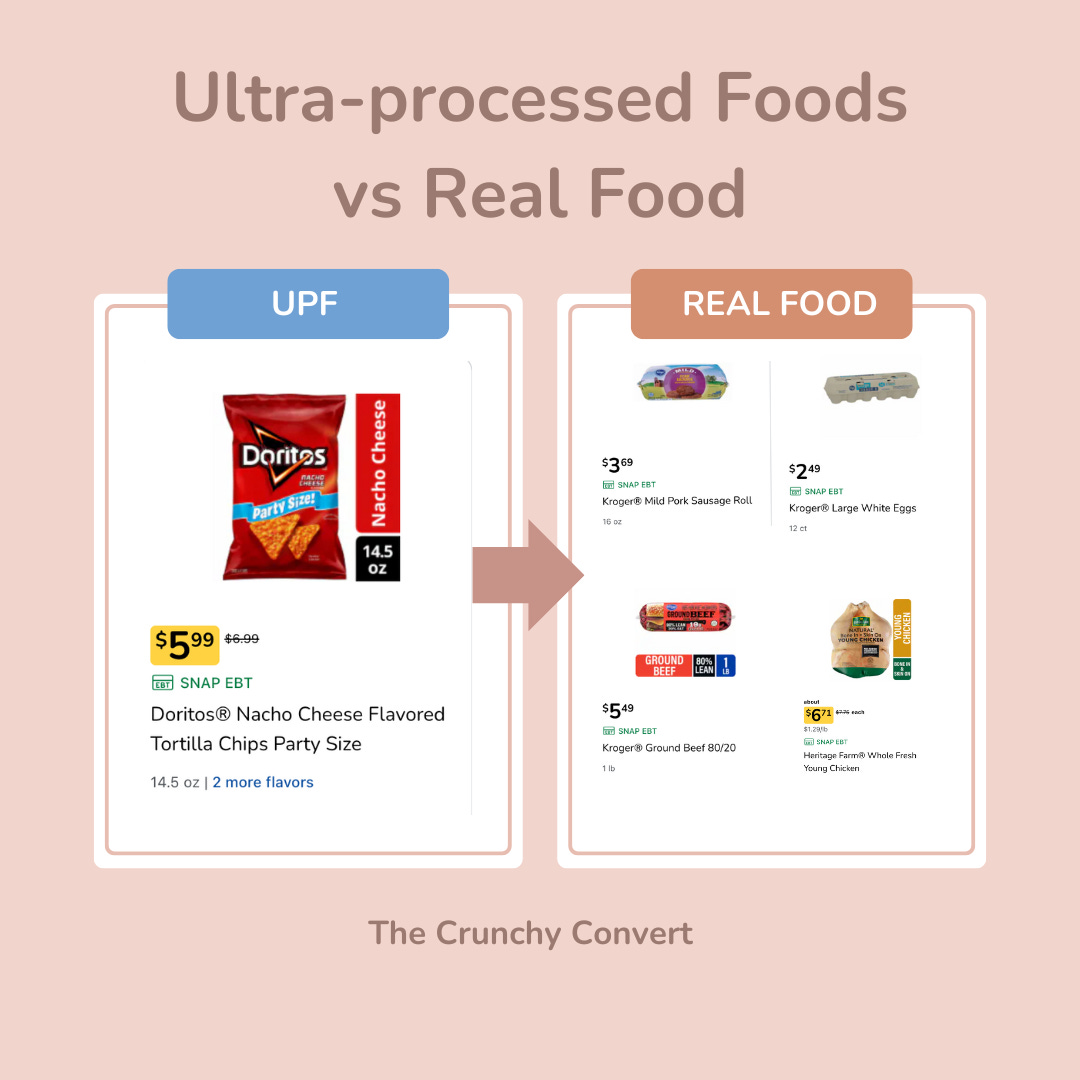
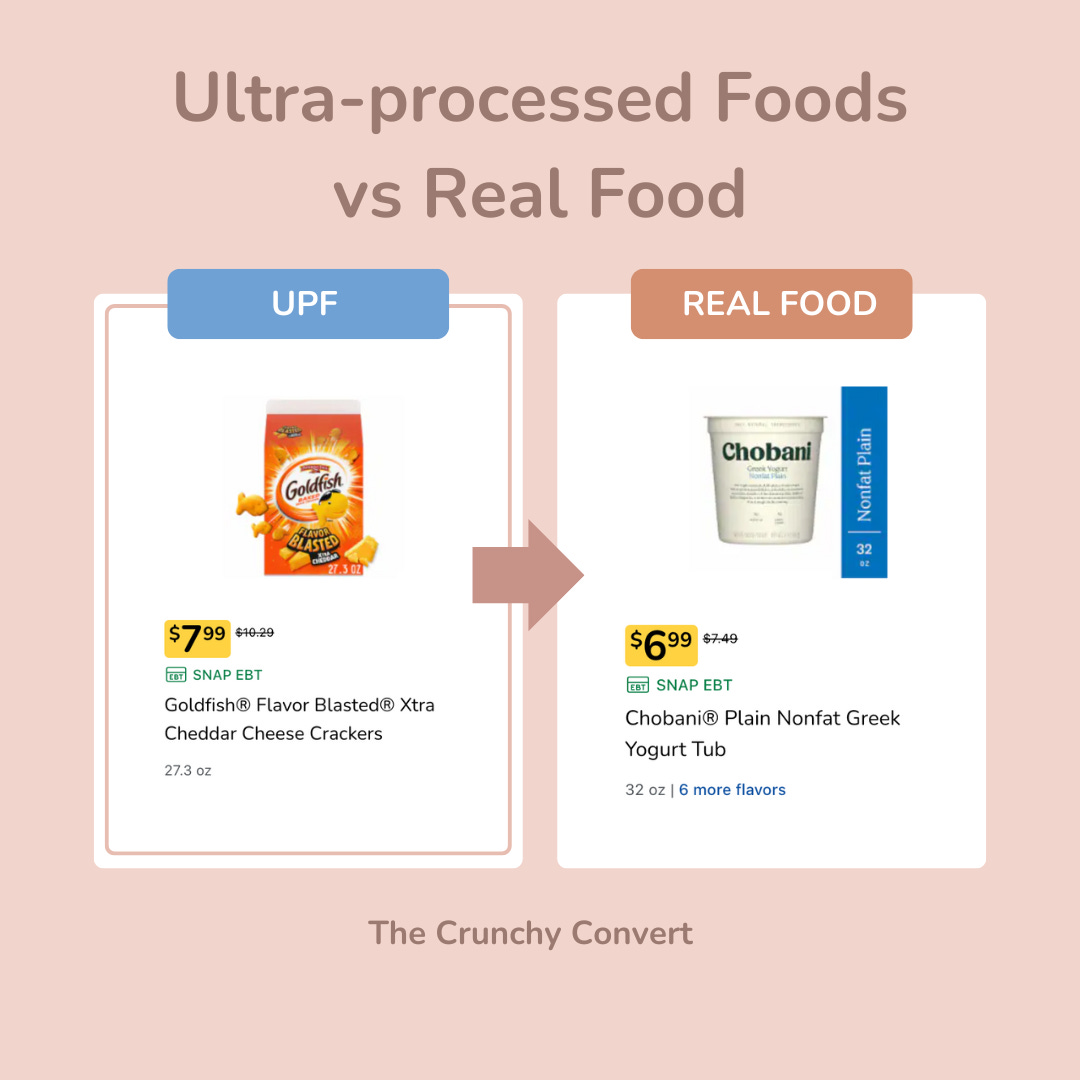
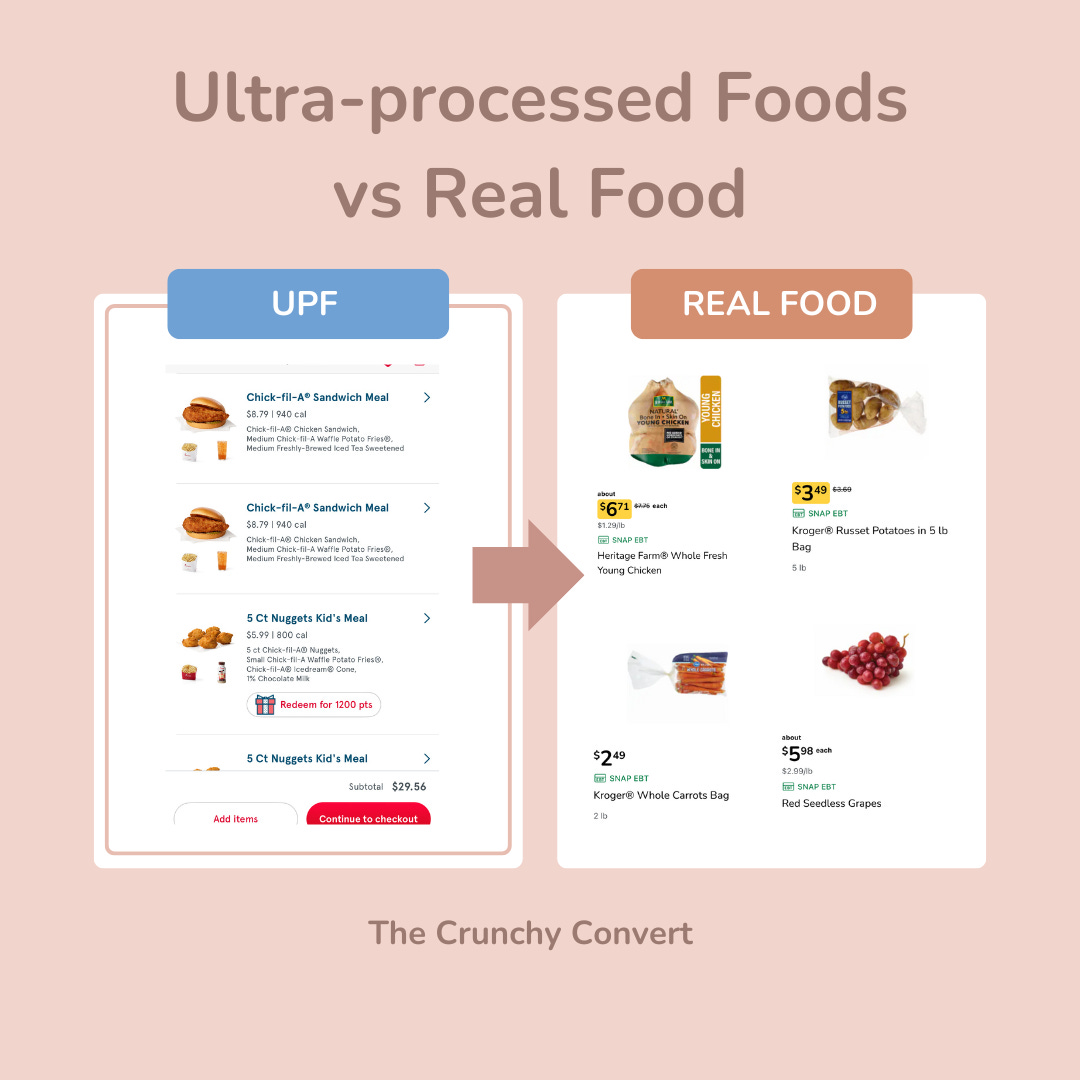
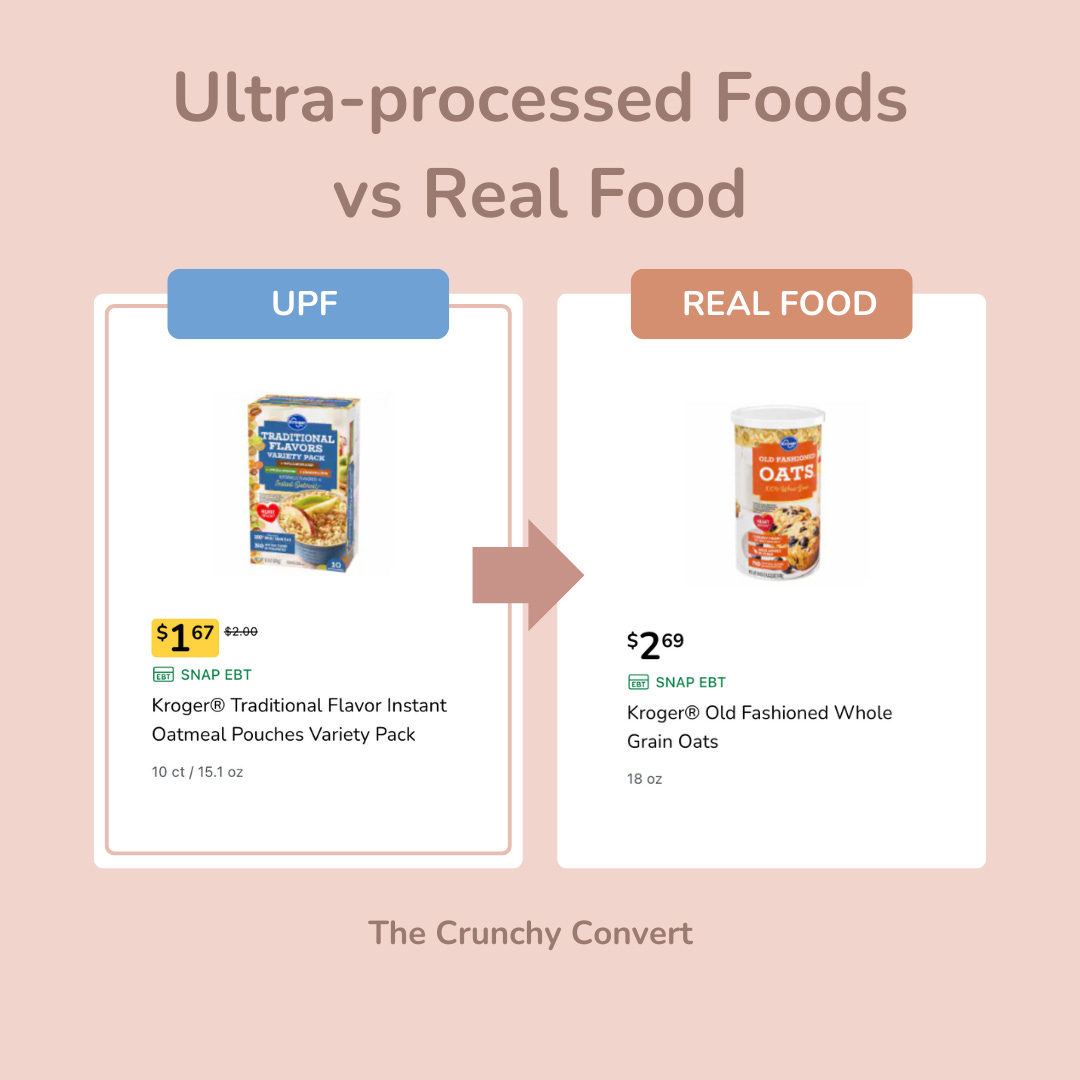
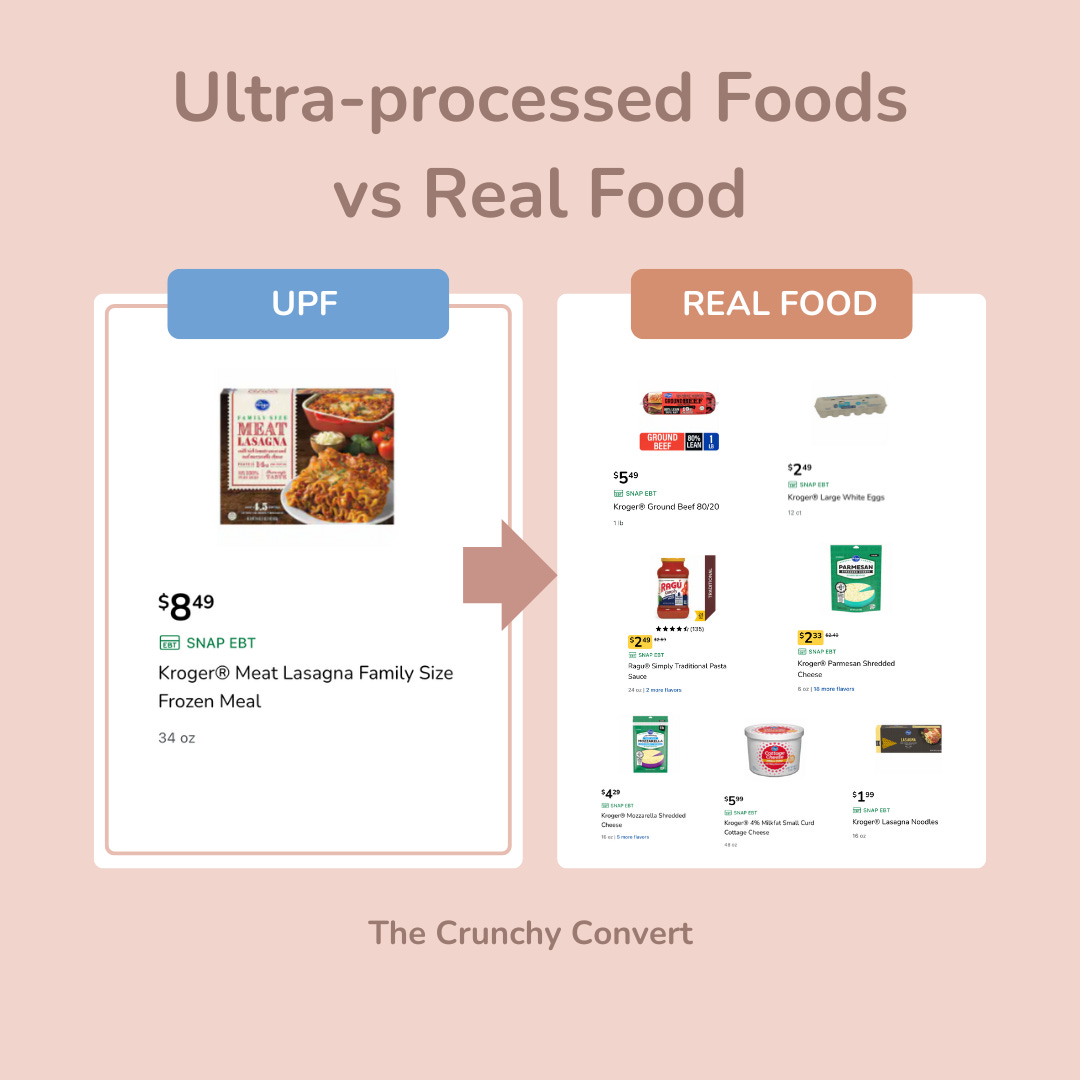
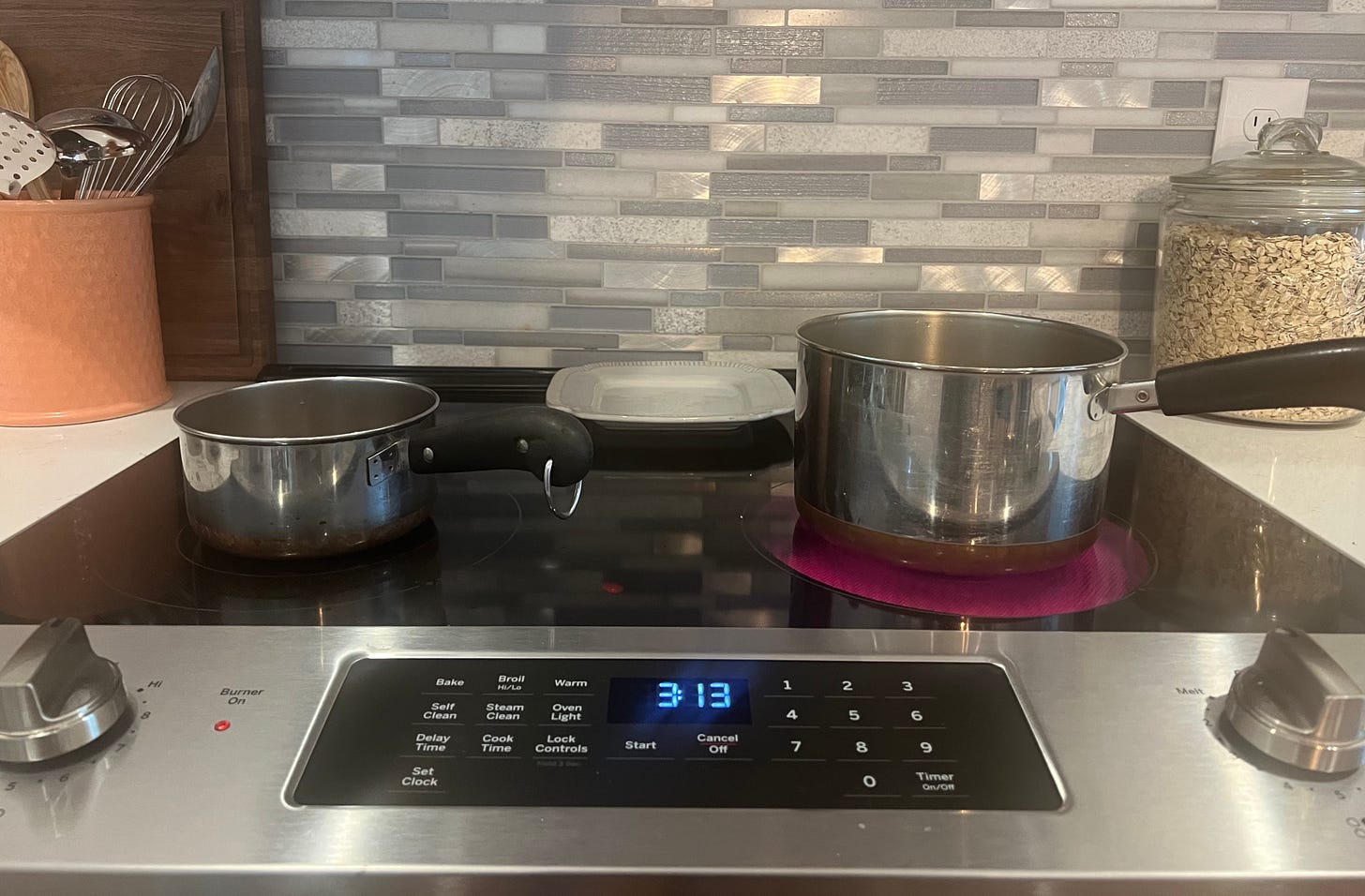
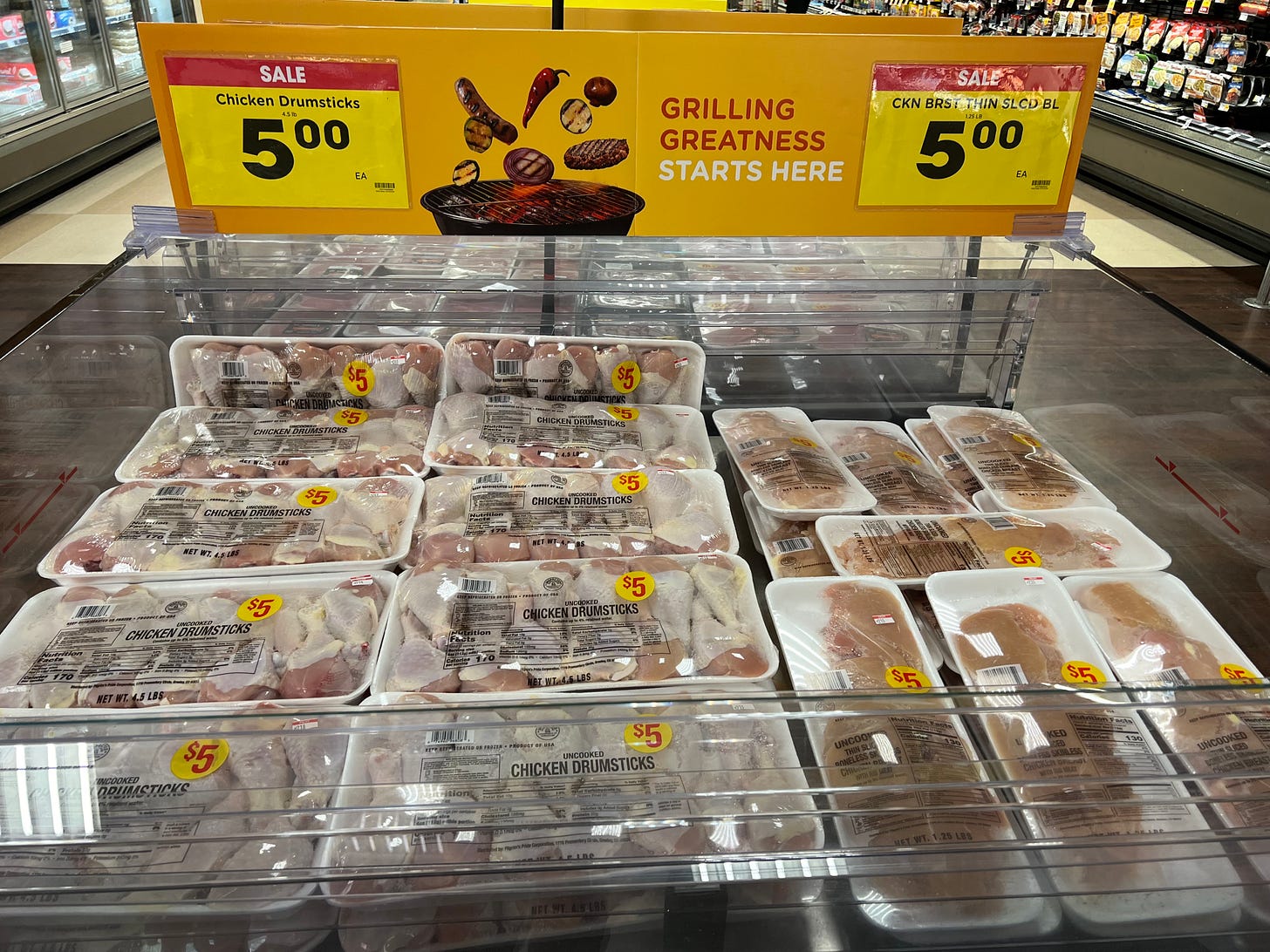
This is inspiring and excellent! I think sometimes we get focused on all we can't do instead of on what we can. Thank you for sharing!
I could not love this more if I tried!! I recently started (then paused, bc kids haha) a YouTube channel called Becca's Real Food Kitchen based on everything you just talked about. Finding money, skills, and time to cook real food. I do it, 3 meals a day, with two under two at home, and on a restricted diet. It can be done!! Bravo